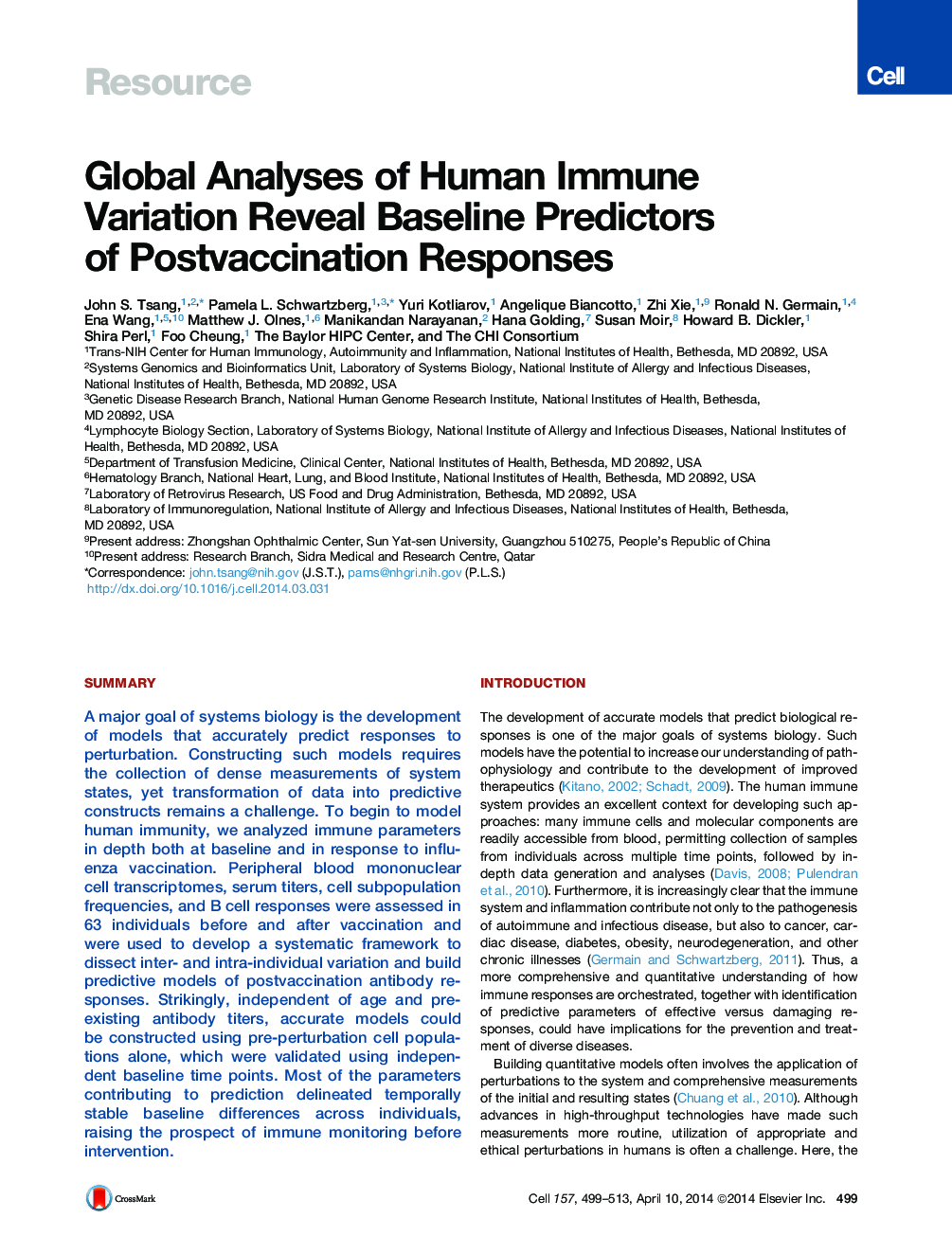| Article ID | Journal | Published Year | Pages | File Type |
|---|---|---|---|---|
| 2035328 | Cell | 2014 | 15 Pages |
•Global characterization of pre- and postvaccination immune variation in humans•Pre- and postvaccination correlates of response quality identified•Integrative analyses revealed baseline predictors of vaccination response quality•Prediction derived from temporally stable immune-cell population frequencies
SummaryA major goal of systems biology is the development of models that accurately predict responses to perturbation. Constructing such models requires the collection of dense measurements of system states, yet transformation of data into predictive constructs remains a challenge. To begin to model human immunity, we analyzed immune parameters in depth both at baseline and in response to influenza vaccination. Peripheral blood mononuclear cell transcriptomes, serum titers, cell subpopulation frequencies, and B cell responses were assessed in 63 individuals before and after vaccination and were used to develop a systematic framework to dissect inter- and intra-individual variation and build predictive models of postvaccination antibody responses. Strikingly, independent of age and pre-existing antibody titers, accurate models could be constructed using pre-perturbation cell populations alone, which were validated using independent baseline time points. Most of the parameters contributing to prediction delineated temporally stable baseline differences across individuals, raising the prospect of immune monitoring before intervention.
Graphical AbstractFigure optionsDownload full-size imageDownload high-quality image (306 K)Download as PowerPoint slide
